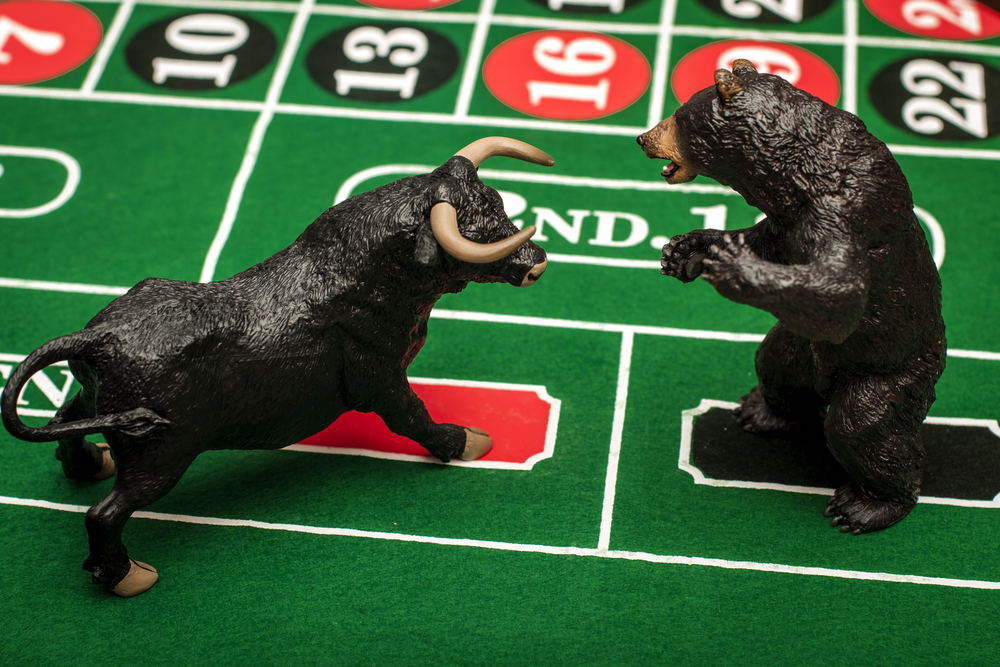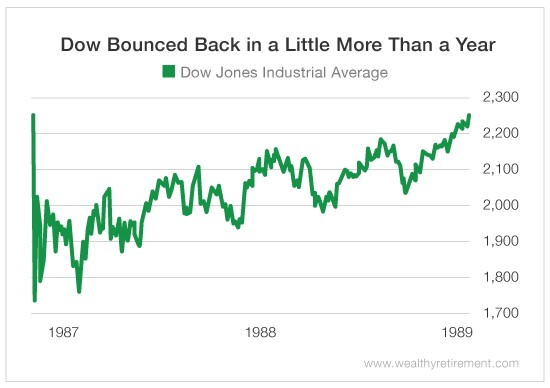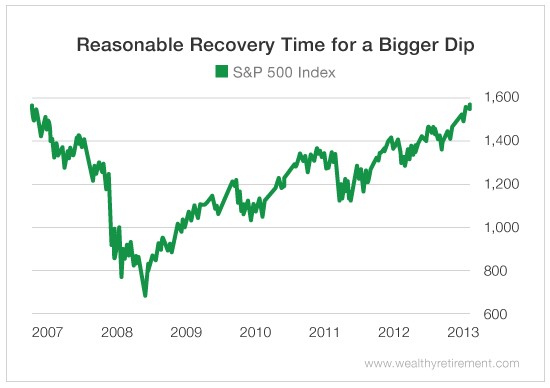
“You’ll never make that money back!” the pitchman breathlessly exclaimed.
The guy on the radio was selling annuities and warning investors not to put their money in the risky “Wall Street casino.”
He tried to scare listeners by telling them that if the market crashed, like it did in 1987, or if we have another nasty bear market like in 2000 or 2008, “it would take a lifetime to make that money back.”
He couldn’t be more wrong.
On October 19, 1987, or “Black Monday,” the Dow Jones Industrials Average plummeted 22.6%.
It was the biggest one-day drop in U.S. stock market history.
But it didn’t exactly take a lifetime to recover those losses…
In fact, it took just 15 months.

During the financial meltdown of 2007 and 2008, the S&P sank a whopping 57% from its high in October 2007.
This one took longer to recover, but the index was back at October 2007 levels by April 2013.

Five and a half years is a long time, but hardly a “lifetime.”
In fact, if you had such incredibly bad timing that you entered the market peak in 2007, but held on until today, you’d be up 87.1%, or just about 7% per year.
That’s just slightly below the market’s historical average of 7.6%. Not bad considering you’d have bought at the market top right before the worst collapse since the Great Depression.
My point is that the annuity salesman exaggerated the market’s risk to make annuities sound attractive.
It takes a lifetime to recover from a bear market or crash only if you sell into the panic.
Historical Proof
When I wrote Get Rich With Dividends, I looked at the market’s 10-year rolling returns.
Since 1937, there were only seven times when the market was not positive over 10 years: the years ending 1937, 1938, 1939, 1940, 1946, 2008 and 2009.
So in other words, you had to sell during the worst economic and stock market downturns in history to lose money over 10 years.













Leave A Comment